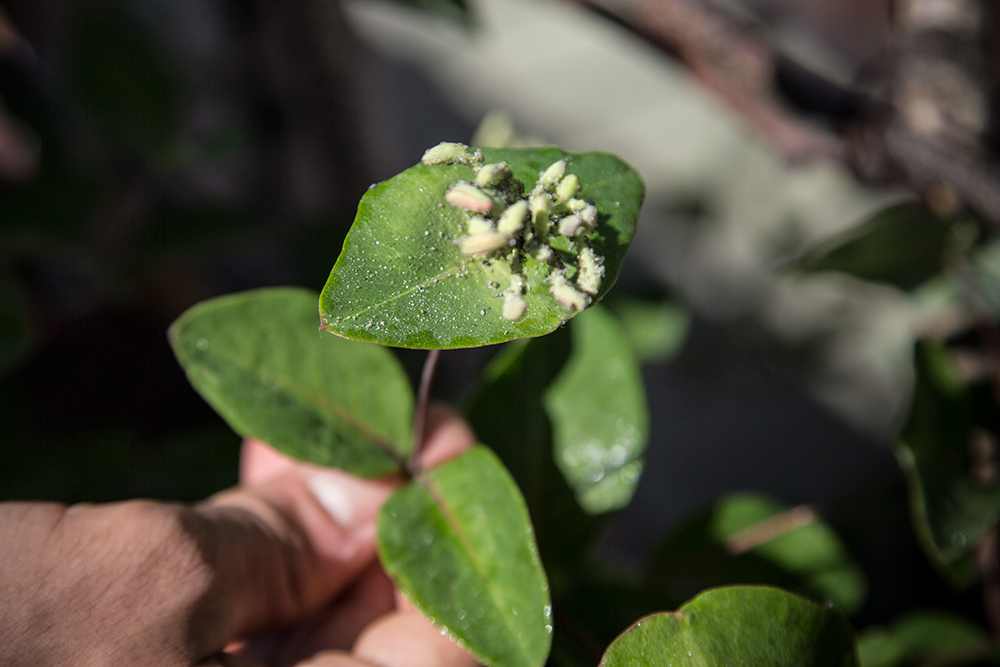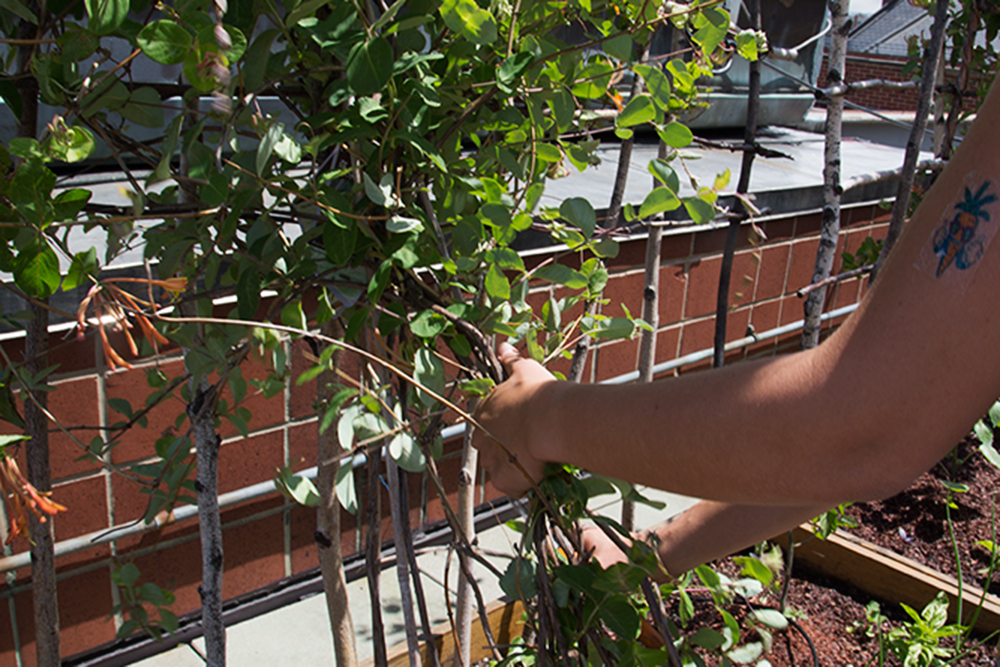Aphids – MoMA PS1 Salad Garden
POSTED UNDER
- Garden ,
- MOMA PS1 ,
- pest control ,
- Salad Garden
The scourge of every vegetable garden are Aphids. To the unseasoned gardener, these teeny tiny bugs can go virtually undetected, before it is too late.
Recently, my friend, fabulous sculptor and gallerist Jesse Greenberg came to visit me at the MoMA PS1 Salad Garden. Jesse was particularly excited about the project, as he and I have history in the garden. Together, we established, planted and tended to our very own garden on the roof of the Columbia University MFA Visual Arts studios when we were students there in 2011. It was a rocky experience (I had previously only gardened in Los Angeles and had a lot to learn about the East Coast climate and plant life), but a bonding one as well.
Jesse immediately noticed a glittery, crystalline coating to the Honeysuckle plants that lined the boxes of newly planted tomatoes, basil, lovage and celery. We marveled at how the leaves glistened in the sun, until reality set in — this was the trace of an Aphid epidemic. Aphids suck the life out of the leaves of your plants, literally, and leave behind a substance called “honeydew.” This stuff is sticky, like someone wiped a popsicle all over your precious plants and left them to dry in the sun.
So, my next step was to PANIC. I called Camilla (my garden collaborator) in a tizzy. Camilla devised a three prong approach:
1. remove all of the Honeysuckle plants ASAP, in the interest of preventing the spread of the infestation to neighboring plants. We started pulling and ripped every last branch of those Honeysuckle out of their boxes.
2. Purchase native larvae to eat the aphids. You often see ladybugs for sale for this purpose, but, in reality, it is more effective to use a bug that is native to your region, do some research. In our case, we released “Lacewing Larvae” into the boxes in the hopes that they would gobble up all those lingering aphids with their sticky fingers.
3. The next step was to spray the shit out of the plants using Safer Soap. This is a natural insecticide, and should be sprayed all over the leaves of your plants, but only after the sun goes down. Otherwise, you could burn the plant.
Hopefully, we are in the clear…fingers crossed!


